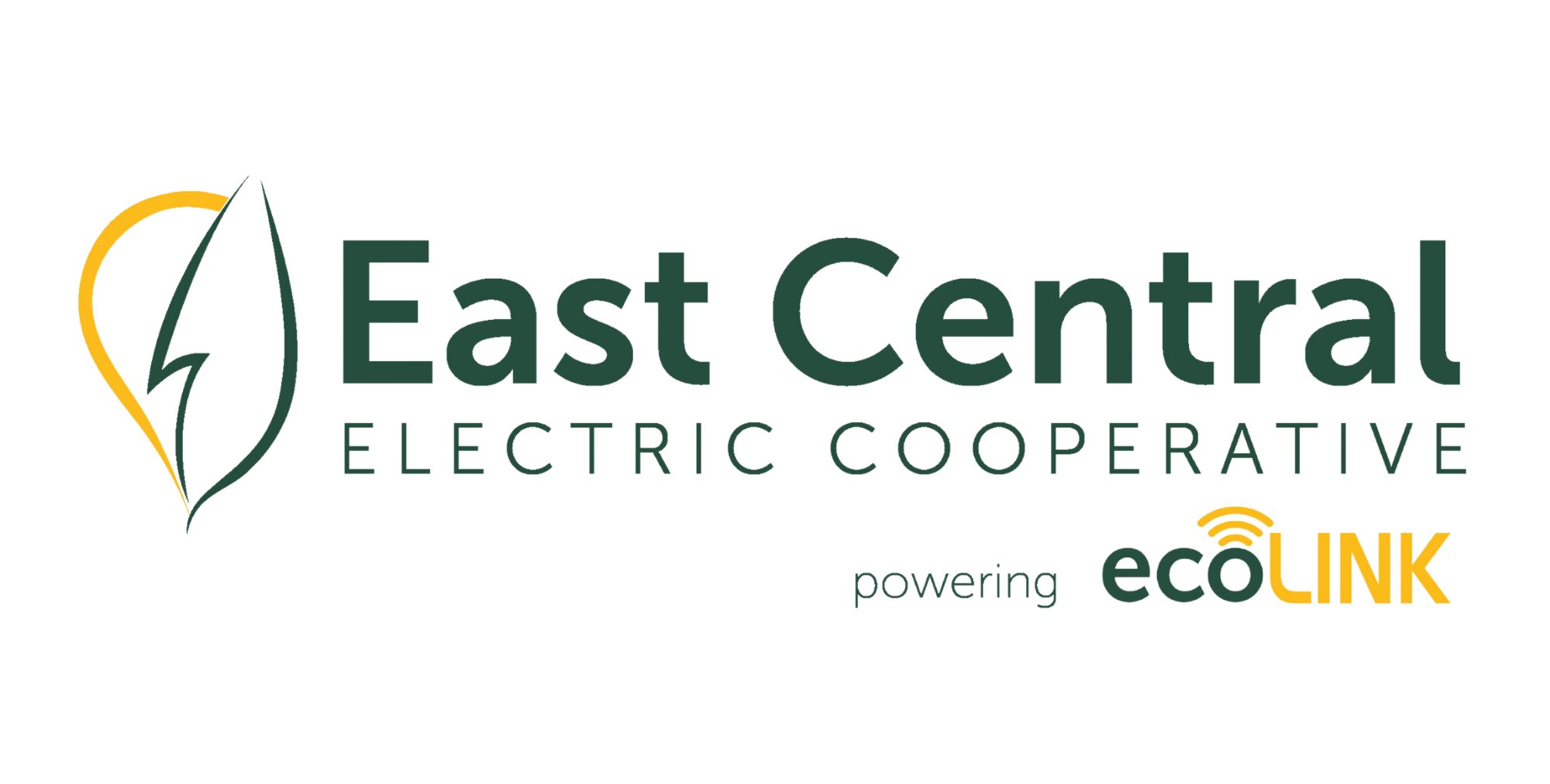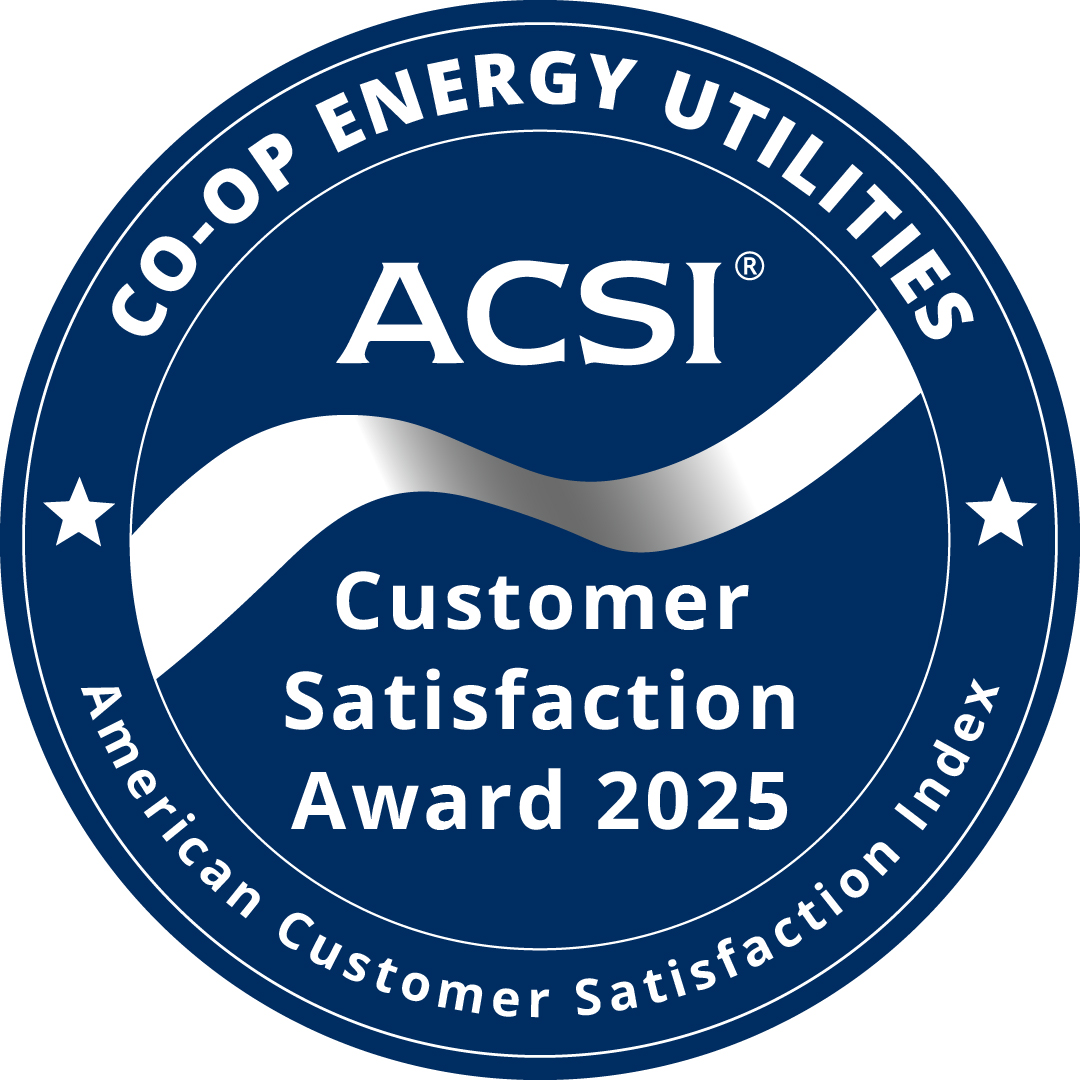As your trusted, local energy experts, East Central Electric Cooperative wants to be your first stop when considering any renewable energy. With so many options available, we want to make solar simple. East Central can help you evaluate the risks and benefits of roof-top solar and small-scale wind and assist in finding a solution that is right for you.
Select a tab below to read more about residential solar, community solar, residential wind, and frequently asked questions.
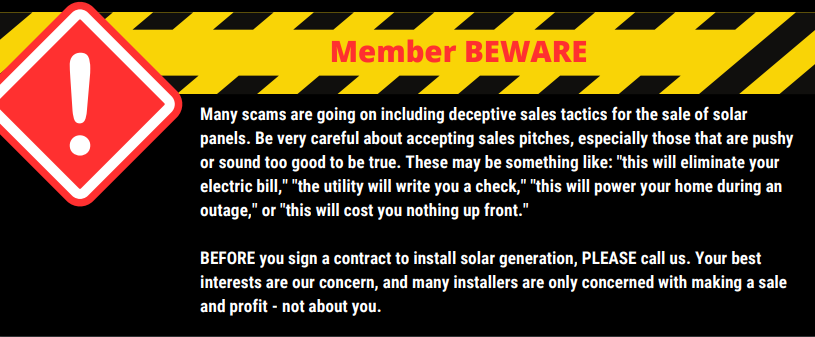
All about Residential Solar
Did you know East Central has an application that members are required to have approved before solar panels can be installed? East Central's interconnection application and agreement can be downloaded using the button below.
Before you consider solar, consider these tips: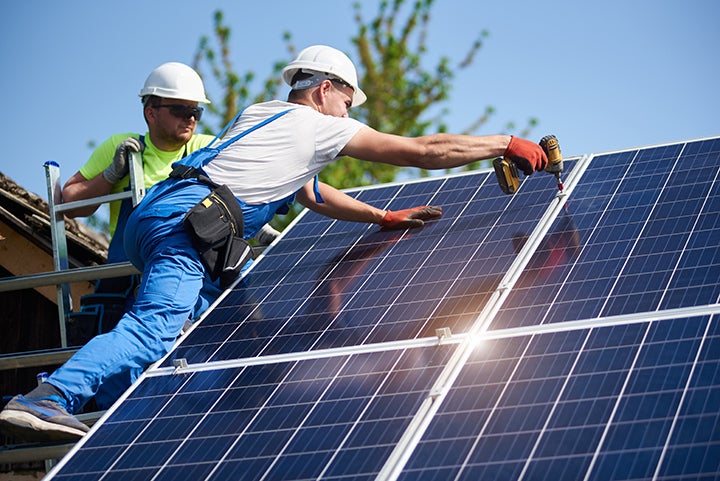
- Do your homework. Research various solar power systems and installation options before investing. Contact East Central for a list of local vendors who have served other co-op members.
- Assess whether your property is a good site for solar. In general, you will need an open rooftop space or land that is free of shade for at least five hours per day.
- Investigate local building codes, zoning ordinances, covenants, and special regulations pertaining to solar power systems.
- Check with East Central to determine the requirements and costs for connecting your system to the grid. Most likely you will still have an East Central Electric bill each month.
- Before adding an active solar system to your home, have your home’s electrical system evaluated by a licensed professional to ensure it can support this new technology.
- Always hire a professional to install solar panels at your home.
- East Central’s interconnection process and approval can take up to 30 days and must be done before a build. Be sure and include this pending time in your timeline when installing solar.
- To view a list of more tips when considering solar, click here.
Is solar energy right for me?
If you have made your home as energy-efficient as possible and now want to install a solar energy system, contact East Central in the initial planning stages. Conduct thorough research on all aspects of any system before making the investment. Determine what your goal for the system is. For example, do you want to install solar energy because you believe it is the right thing to do? Or are you looking to save money? If you want to save money, carefully examine all the financial considerations first.
Start with energy efficiency
Before installing a solar energy system, consider reducing your energy use by making your home more energy-efficient. Many energy efficiency measures have a faster return on investment, and the initial investment is less than that of a renewable energy system. East Central has energy efficiency rebates as well, visit the rebates page.
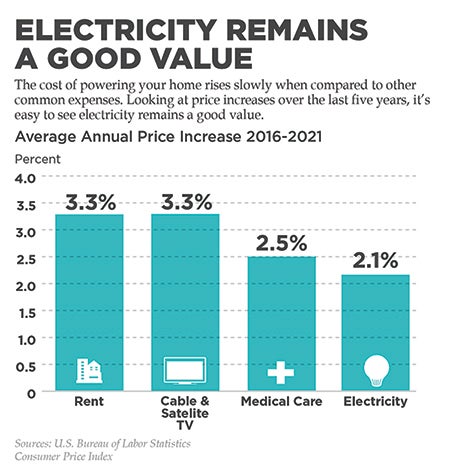 Financial considerations
Financial considerations
When evaluating the potential of installing a solar electric system at a home or business, considerations should include:
- Solar access: Oklahoma is fairly good in comparison to other parts of the country. Site-specific access depends on installing the system so it is not shaded. See your location on the map for average output.
- Retail cost of residential electricity: Oklahoma is low in comparison to many other parts of the country. A lower electric rate makes the return on investment length longer than a higher electric rate.
- Available incentives: Solar energy systems may qualify for a federal tax credit of 30 percent until 2019, 26 percent in 2020 and 22 percent in 2021.
- The total cost of the system: The average installed cost of residential solar photovoltaic (PV) is $2.89/watt, or $28,900 for a 10-kilowatt grid tie-in system.1 In addition, there may be other costs to consider, such as liability, homeowners’ insurance and property taxes.
Given the information listed above, evaluate your situation to ensure installing a solar system makes sense financially for you.
1Solar Energy Industries Association (SEIA), U.S. Solar Market Insight Report 2018 Q3
Oklahoma's Photovoltaic Solar Resource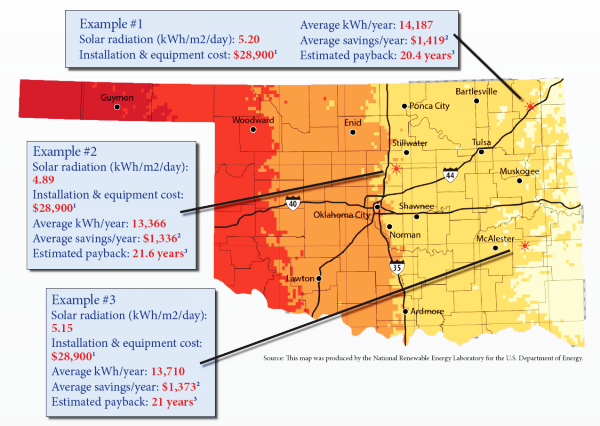
This map is measured in kilowatt-hours per square meter per day (kWh/m2/day), which represents insolation, the total energy on a surface over a specific time interval. Examples use the location’s solar resource to determine average output and savings per year, and were calculated using the National Renewable Energy Laboratory’s (NREL) PV Watts calculator using the default settings, including inverter efficiency of 96 percent. For more information, visit pvwatts.nrel.gov.
Your output may vary depending on site-specific factors and regular maintenance such as washing the panels several times per year. Output also may drop about 1 percent per year through the average 20-25 year lifespan of most systems.
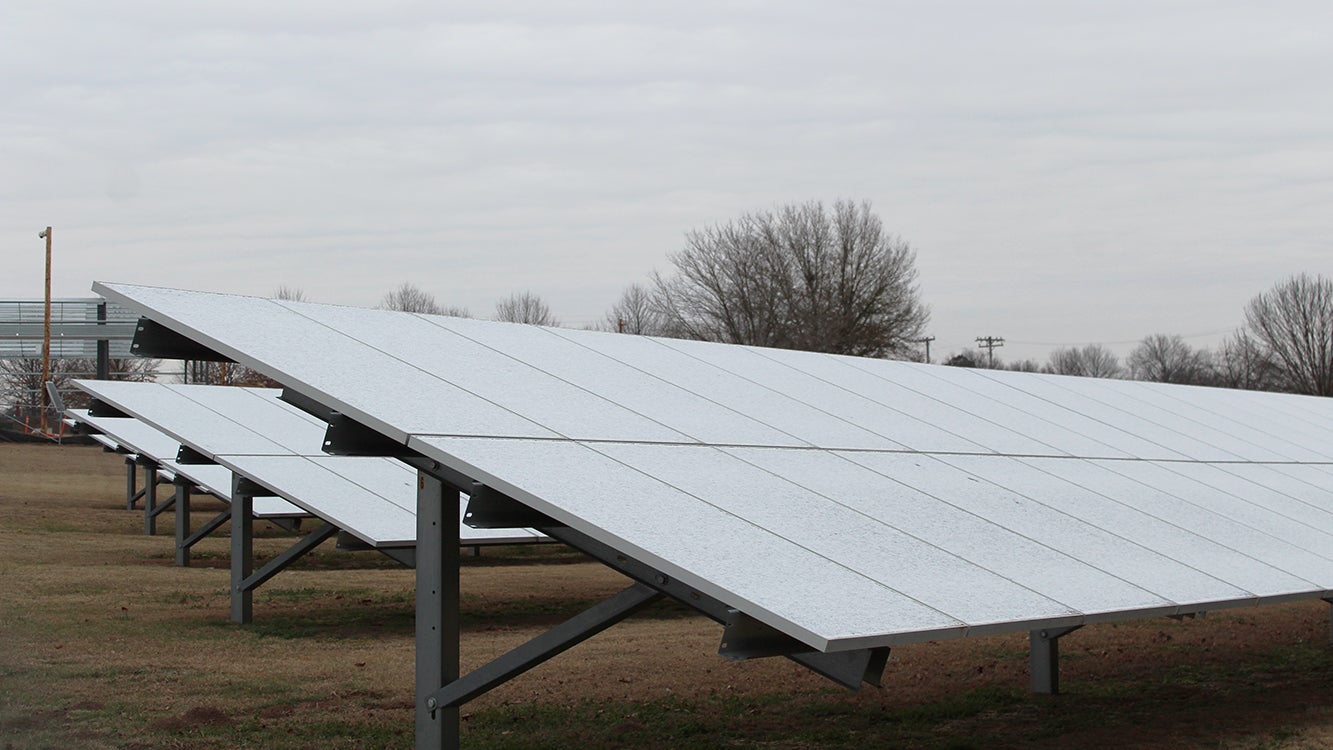
ECE Community Solar allows members, regardless of income level, geographic location, home design, or home ownership – to access clean, solar energy. Members subscribe to a portion of the output of the kilowatt hours generated from a centrally located photovoltaic system.
Solar panels are installed south of ECE Headquarters in Okmulgee, along Highway 75. Members subscribe to a share (panel) or multiple shares of the system production. Subscription price is multiplied by the number of shares (panels) each member chooses. Members are then credited on their monthly bills based on their portion of the system production. Participants do not own any of the panels or infrastructure.
Nothing is installed on your home or property. You have nothing to maintain. You have the opportunity to directly invest in a renewable energy project and receive credit from it on your monthly bill.
If you move your electric service to a different location within ECE’s service territory, your credit can be transferred to your new location. If you leave the area, you may elect to transfer or assign the credit to another member, or ECE will return your subscription cost to you on a declining basis of 4%.
No. Tax credits are only available to owners of solar panel systems. ECE members are not eligible because they subscribe to ECE Community Solar.
Community Solar Member Tariff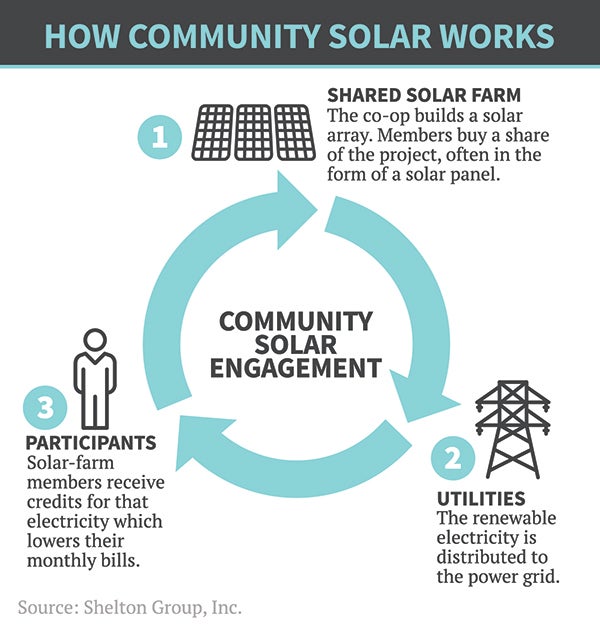
The ECE Community Solar Member Program Tariff is available on a voluntary basis to metered Residential Members at the location of their primary residence who enter into a Program Agreement with the Cooperative.
The ECE Community Solar Project is a 250 kW solar facility located adjacent to the Cooperative headquarters in Okmulgee, Oklahoma. Members may subscribe shares of the Solar Facility that entitle the Member to the output of the Facility equal to 0.1053% per share of the total production of the Solar Facility on a monthly basis. The Member’s account will be credited based on the Share Credit as described below. Total shares available for subscription from this Solar Facility are limited to 950 shares. A share is defined as one panel.
The initial Subscription Price Per Share effective through September 2017 is $350.00, thereafter the Subscription Price per share shall be reduced by 4% each calendar year. Shares may be subscribed in quantities ranging from 1 to 25. The energy produced by the Member’s subscribed shares is not intended to exceed the total annual energy consumption of the participating account.
Each share shall be active after the enrollment period set forth by ECOEC for a Term ending September 2041 or until terminated pursuant to the terms of the License Agreement.
Click here to view our Community Solar Output Data.
Share Credit
During each monthly billing period, a Share Credit will be provided to the Member based on the actual energy produced by the Member’s subscribed shares multiplied by an Energy Rate Credit Factor (ERCF) per kWh included in Attachment B to this tariff.
The Share Credit shall be calculated as follows:
Share Credit = A*B*C
Where,
A = Total energy output of the entire solar array facility for the prior month, as measured by appropriate Metering devices
B = Energy Rate Credit Factor in $/kWh
C = The percentage of subscribed shares owned by the Member
In the event that the credit for share ownership surpasses consumption of an assigned account, the credit will be carried forward to the Member’s subsequent bills for the account. If at the end of the calendar year, credits from shares remain, the credits will become property of ECE.
 Small wind electric systems can be used for a variety of applications, including water pumping on farms and ranches. While not currently as popular as residential solar, residential wind is an option more and more rural Oklahomans are considering to offset electric costs. Residential wind is also covered by East Central Electric Cooperative's Distributed Generation Agreement and net metering is available for members who choose this option.
Small wind electric systems can be used for a variety of applications, including water pumping on farms and ranches. While not currently as popular as residential solar, residential wind is an option more and more rural Oklahomans are considering to offset electric costs. Residential wind is also covered by East Central Electric Cooperative's Distributed Generation Agreement and net metering is available for members who choose this option.
Small wind electric systems require planning to determine if there is enough wind in your area on a consistent basis, if the location for the system is appropriate for harnessing wind energy, if zoning ordinances and building codes allow wind systems in your area, and if the system will be economical with all of these elements taken into consideration.
If you are considering residential wind, the U.S. Department of Energy has helpful resources on their website for Planning a Small Wind Electric System and for Installing and Maintaining Small Wind Electric Systems.
If you are ready to move forward with residential wind, East Central has an application that members are required to have approved before wind turbines can be installed and connected to the grid. East Central's interconnection application and agreement can be downloaded here.
Before installing a solar energy system, consider reducing your energy use by making your home more energy-efficient. Many efficiency measures have a faster return on investment, and the initial investment is often less. If you decide to install solar, make sure you are aware of all state and federal regulations. Verify the solar system under consideration meets the national electrical code. Review all aspects of any system before investing and work with Central throughout the process.
East Central can help in the initial planning stages. We can assist you in determining the necessary safety equipment required for connecting your system to the grid and provide you with a copy of our cooperative’s policies and metering agreements on distributed energy.
The average residential system is around 10 kilowatts; however, consider a number of factors when determining size. What parts of your home do you want to run with the system? Does that include air conditioning and heat? What is your average monthly kilowatt-hour usage and how much of that do you want your system to cover? A reputable dealer will be able to provide that information.
A typical individual residential solar panel measures about 18 square feet. An average size installation of a 10-kW array will require about 800 square feet of space, depending on rated wattage and technology. Consider these factors: age of your roof, roof replacement timeline, ability of your roof to support the weight of the panels, amount of shade on your roof, community or subdivision restrictions, etc. Roofs facing south generate maximum wattage.
Do your homework. Check out a list of reputable, long-term providers. Always get references and learn as much as possible about the companies you are considering. Because there are often a variety of systems and payment plans, it is always a good idea to get multiple quotes before choosing a vendor.
East Central is more than 99.9 percent reliable. You will be able to rely on your cooperative to back up your solar generator and provide all your electricity needs. Remember, your system will only produce power while the sun shines and the power is on from the cooperative. If you choose to go off the cooperative’s grid and do not install backup storage batteries, you will not have electricity when the sun isn't shining. A backup battery system can easily double the cost of installation and add ongoing maintenance costs, but may offer solutions to preventing loss of power.
If you already have solar installed at your home, please contact an East Central Customer Support Representative by calling 918-756-0833. To ensure the highest of safety standards are met, East Central will come out and inspect the installation and work with you on completing the Distributed Generation Interconnection Agreement.
